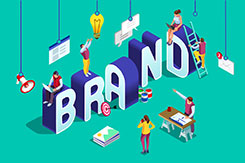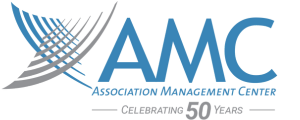
Getting Your Brand into Your Grant Proposals
Creating a compelling story is part of the art and craft of a good grant proposal. We invite the reader in to share our story and our mission and hopefully, compel them to be part of our story.
It is equally important that grant proposals represent the brand of our organization. Branding is a concept not often brought into grant proposal discussions because concepts associated with marketing are often outside the usual purview or day-to-day functioning of the grants department.
Bring to mind some of your favorite nonprofits. Does their name or your association with them as a donor or volunteer make you feel a certain way? It’s probably a good feeling or you would stop donating or volunteering. We want our proposals to evoke positive feelings of the association and the theories behind branding strategies can help us make that positive emotional connection.
There is no single definition of brand. As described by the American Marketing Association “A brand is a name, term, design, symbol, or any other feature that identifies one seller’s good or service as distinct from those of other sellers”. Branding is what we do to convey meaning, purpose, and value of our organization, even so far as to evoke a feeling or emotion about the company.
It seems like a simple task to inspire feelings or desired association in a grant proposal but the point that I want to put forth is a conscious intent to make sure the messaging and strategy is consistent and alignment with the organization as the whole. This unity in messaging across all the organization’s activities is essential to presenting a clear mission, helps to define expertise and scope of activities, and helps build trust. This should be a requirement, not an afterthought, of each proposal. Within a proposal, we have the unique opportunity to introduce our organization to a funder. Moreover, we have the good fortune of multiple pages to present the brand. I have little experience in marketing or branding, but I have gleaned some useful ideas that I feel lead to better grant proposals.
How to Incorporate Brand into Grant Proposals
1. Read everything
Take the time to read everything you can find out about your organization, not just when you are new, but on a regular basis. Start with the website and include press releases, annual reports, board meeting and especially your strategic plan. Read with the curiosity of someone unfamiliar with your organization or as a qualitative researcher. Identify the themes, concepts, and sentiments in the materials and pull out what will resonant and align with grantors. Identify inconsistencies that may need to be addressed in the proposal. Does what you’re reading feel in sync or connected with what’s in your proposal? I’m sure this won’t surprise you, but the funder will be on your website, looking at press releases, 990 forms, tweets, Facebook… everything. So, if your proposal is out of sync, they will catch it. Again, applying your organization’s branding strategy strengthens your proposal because no matter where the grantor lands, they know who you are and what you stand for. It will be easy for them to see how their funding fits into the larger scope of your organization and the population served.
2. Make friends

The first place to do this is your marketing/media department. Ask for a style guide, a glossary, a fact sheet, annual report, logos, and taglines – whatever they have. Ask them to help you get the right look and feel to ensure you have a unified message. If you don’t have a marketing/media department, take the time to develop guides that you will use consistently across every proposal you submit. Not only will it make your proposals better, but will make your life easier. A simple style guide will include your page layout with header and footer, logo, font, and colors. A fact sheet should include updated numbers commonly called for in a grant such as number of clients served, annual operational budget, etc. My advice is to stick with the numbers throughout the whole fiscal year and qualify them with a statement noting the time frame. This will add credibility, make reporting easier, and help benchmark your starting point. Additionally, if you are working with a team, this fact sheet will help everyone consistently report the same information.
Spend time with your co-workers working in the programs and the people served by your organization. This can be a more formal interview process or just spend a day as a volunteer. I prefer the later. I like just hanging out with them. I listen to their voices, hear what keeps them up at night, and understand the words and language they use to describe the organization and its value. This is truly the look and feel of the organization!
3. Watch your words

There is a tremendous pull to cut and paste from one proposal to the next or straight from the website to the proposal. Useful activity ensures consistency and saves time. However, to effectively incorporate brandings means that you remain constantly cognizant of the word choices that reinforces your brand.
What’s in a name? Starting with your brand name, make sure you refer to your organization consistently – full name, acronym, or some alias. Your proposal should use it the same way your organization is referenced on the website and other materials.
The words we choose not only reflect the organization’s branding but that of the people we serve. Are your words representing them correctly or do they perpetuate a stereotype or further stigmatize them? I offer the following as an example: older adult, elderly, senior citizen, aged, geriatric, and retiree. Did each word provoke a different image of individuals who are demographically in the same age group? Choosing the right description of your population does impact how the reader reacts to your brand and the population you serve.
A fantastic example of the importance of the name is the history of The Arc. In 1953 the organization was incorporated as the National Association for Retarded Children (NARC). As the organization progressed and the children served grew into adults and our understanding of developmental disabilities developed, the name continually evolved to continue to serve, respect, and destigmatize the individuals they serve.
Mind your jargon. Overuse of jargon is trap we can easily fall into as we seek to achieve consistent messaging. Jargon can be used to speak efficiently among members in a community. Conversely, it is a barrier to understanding for those outside the community. Too much jargon turns into background noise and readers start to tune out. We, as grant writers, perpetuate ineffective use of jargon if we don’t consciously identify and take steps to alter it. As with all writing, know your audience. Take time to assess their level of familiarity with your organization, your work, and the people you serve. Next, as simply as possible, tell them what you are doing and why. Break it down into discrete steps or phases and the impact. In order to understand your brand, as simple as possible, they need to know as simply as possible what you do.
Developing a brand and implementing brand strategy are complex and agency-wide endeavors. As grant professionals, we serve our organizations well by making sure our proposals support those branding activities. And even if your organization has never developed a formal brand strategy, you still have a brand. Your constituency has already developed a perception about the organization. Taking control of branding as a grant professional helps make sure a positive and appropriate perception is shared by all who come in contact with your organization and will only strengthen your grant proposals.
Be the first to know about the latest articles, news, and events from AMC. Sign up for our emails!


